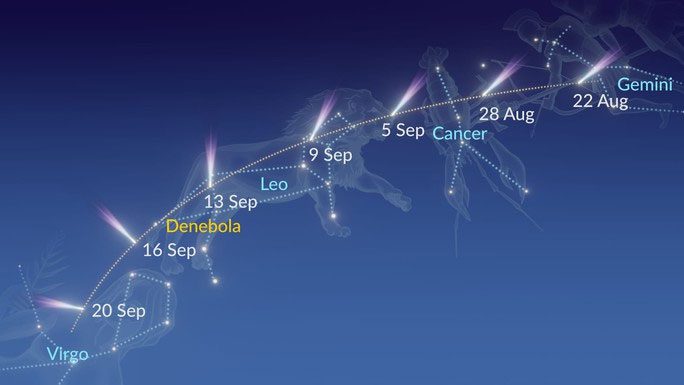Throughout the end of August and the beginning of September, a mysterious blue fireball will shine brightly on Earth. This is the first and possibly the last time we can observe it with the naked eye.
According to Sky & Telescope, this mysterious blue fireball is comet C/2023 P1 Nishimura—commonly referred to as Nishimura comet—first discovered by Japanese amateur astronomer Hideo Nishimura on August 12.
The brightness of the comet has been gradually increasing since then, as it moves toward the Sun and gets closer to Earth.

The path of the Nishimura comet (from left to right) during the observation phase with binoculars (August 22 to September 18 or 20), including several days when it can even be seen with the naked eye. It will move from the constellation Gemini, crossing Cancer, Leo, and advancing toward the constellation Virgo – (Image: STAR WALK).
Comets have always been unpredictable objects, but given its current orbit, experts from Sky & Telescope predict that it will be visible to the naked eye from the end of August, while NASA believes the best time to observe this fireball will be in early September.
It will appear as a ghostly fireball flying across the sky, with its blue light resulting from the sublimation of the comet’s material as it gets closer to our scorching Sun.
“One issue is that the comet will be at an angle close to the Sun, so you can only see it during dusk or dawn,” NASA stated.
Experts also believe that the brightness of the comet will gradually decrease after a few days of visibility, making it nearly impossible to see from September 5, before reaching the perihelion—which may also be its “death point”—on September 18.
This is the first time we will see this object, and it may also be the last.
The perihelion of the Nishimura comet is determined to be about 0.2 astronomical units from the Sun, or 20% of the distance between the Sun and Earth, and lies deep within Mercury’s orbit.
NASA suggests that this distance could cause the comet’s nucleus to completely disintegrate.


















































